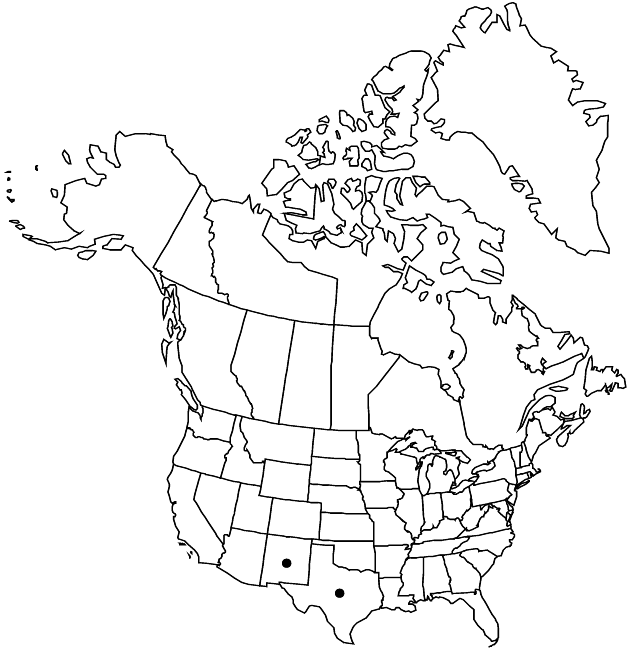Difference between revisions of "Viguiera stenoloba"
Contr. Gray Herb. 54: 97. 1918.
FNA>Volume Importer |
FNA>Volume Importer |
(No difference)
| |
Revision as of 18:48, 24 September 2019
Shrubs, 50–150 cm. Leaves opposite or alternate; sessile or subsessile; blades ovate (and shallowly to deeply lobed, lobes 3–9, ± linear) or linear, 1.5–10.8 × 1–9 cm, ultimate margins entire (revolute), faces: abaxial loosely to densely strigillose (canescent) and gland-dotted, adaxial densely strigose to glabrate. Heads usually borne singly. Peduncles 2–5 cm. Involucres 5–12 × 7–9 mm. Phyllaries abruptly narrowed to acuminate or spatulate (phyllary bases broad, indurate, apices herbaceous). Paleae (oblong-rectangular) 4–5 mm, apices abruptly acuminate. Ray florets 13–18; tubes 0.9–1.1 mm, laminae 7–12 mm. Disc florets 100+; corollas 3.3–4.2 mm. Cypselae 2–3 mm, glabrous; pappi 0. 2n = 34, 68.
Phenology: Flowering May–Sep.
Habitat: Tamaulipan and Chihuahuan Desert scrub
Elevation: 800–1900 m
Distribution

N.Mex., Tex., Mexico (Chihuahua, Coahuila, Durango, Nuevo León, San Luis Potosí, Tamaulipas, Zacatecas).
Discussion
Viguiera stenoloba is a dominant shrub in some places in the trans-Pecos region of Texas. M. L. Butterwick (1975) suggested that the species is separable into two varieties; those have never received formal taxonomic recognition.
Selected References
None.